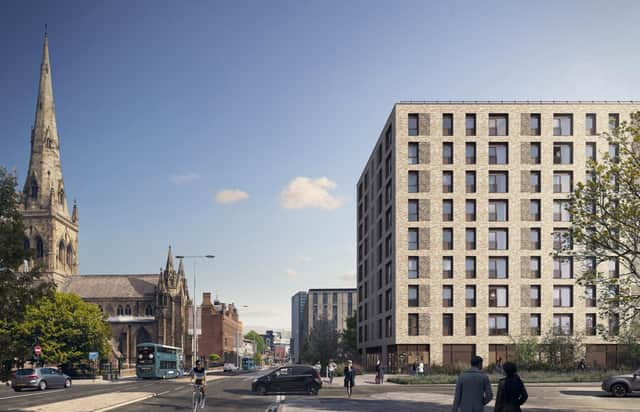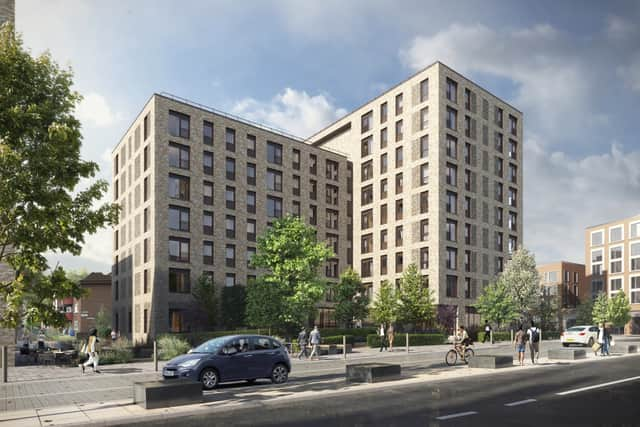New low-energy flats in Salford ‘will be 100% affordable housing’


A new block of flats set to be built in Salford will be among the first ‘ultra-low energy’ schemes of its kind in the country with 100% affordable apartments.
The nine-storey building with 96 flats in Chapel Street would be the biggest Passivhaus project in Greater Manchester, and one of the largest in the UK.
Advertisement
Hide AdAdvertisement
Hide AdThe development has been designed using the principles of the Passivhaus Institute in Germany to create comfortable homes which require little energy.
It would be one of a limited number of Passivhaus-certified social housing schemes nationwide and the first of this scale in the North West.
The site, which was home to stalwart store Shalimar, faces Salford Cathedral.
The development project, which has been referred to as Plot E6 so far, will now be known as ‘Greenhaus’ – a nod towards its highly sustainable nature.


Advertisement
Hide AdAdvertisement
Hide AdHousing association Salix is set to manage the new affordable apartments.
There will be 44 one-bedroom and 52 two-bedroom flats in the new building, most of which will be available as part of a ‘rent to buy’ ownership scheme.
The plans, which were approved by the council’s planning panel last week, will also feature a public square within the site called St John’s Place.
The English Cities Fund will be able to ‘draw down’ land owned by Salford council around the site as part of an agreement signed in December 2015.
Advertisement
Hide AdAdvertisement
Hide AdThe council’s strategic property manager Andrew Cartwright presented the proposal to senior councillors at a meeting on Monday.
He said: “This is really ambitious. A Passivhaus scheme in Salford that’s 100% affordable. It’s the first in Greater Manchester – we think it’s probably one of the first nationally as well. So we are sort of pushing the boundaries on this.”
The residential scheme will receive funding for the properties from Homes England alongside £1.4m from the government’s brownfield land grant fund.
Work is expected to start in January 2022 and last approximately two years.
Advertisement
Hide AdAdvertisement
Hide AdMaggie Grogan, senior development manager at The English Cities Fund, said the company is ‘delighted’ to be bringing forward the Salford Central scheme.
She said: “As a responsible business, we’re leading the charge and are committed to developing innovative ways we can deliver regeneration more sustainably and do our bit to tackle the climate crisis.
“So, to be able to deliver sustainable and affordable homes in the heart of Salford, is testament to the hard work, tenacity and progressive thinking of everyone involved.
“We believe that we’re continuing to add to this diverse place through our work repurposing key parts of the city in partnership, by delivering choice and amenities, driving investment, while providing opportunities, all to directly benefit Salford community and we can’t wait to get started.”
Advertisement
Hide AdAdvertisement
Hide AdA spokesperson at WARM Low Energy Building Practice, which is set to certify the proposed Passivhaus scheme, added: “We’re excited to be involved with the Salford E6 Project which is set to be the biggest Passivhaus project yet in Manchester and one of the largest in the UK at 96 dwellings.
“It is great to see these larger projects coming forwards as Passivhaus gains momentum, helping manage both emissions and energy costs, whilst also delivering outstanding quality housing and comfort for future occupants.
“As well as having low energy use, the project also supports the transition to low-carbon energy sources, as it is all electric, and includes Solar PV generation.”
Comment Guidelines
National World encourages reader discussion on our stories. User feedback, insights and back-and-forth exchanges add a rich layer of context to reporting. Please review our Community Guidelines before commenting.